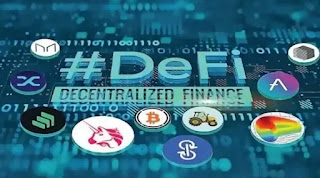When I first heard about decentralized finance—or DeFi—I was skeptical. The idea of managing money without a traditional bank sounded risky. But curiosity got the better of me. After a few months of reading whitepapers, joining forums, and following project roadmaps, I realized DeFi isn’t just a trend—it’s a foundational shift in how finance works.
In 2025, I’ve made it a habit to research DeFi platforms regularly. I don’t follow hype. I follow fundamentals: transparency, innovation, use-case, and community support.
Let me walk you through how I personally identify promising DeFi projects, and why a few stand out to me this year.
What I Look for in a Strong DeFi Project
1. Real Use Case
A good DeFi project must solve a real-world problem. Whether it's simplifying lending or streamlining remittances, I need to see tangible impact.
2. Audit and Transparency
Before I even think about using a platform, I look at its smart contract audits and security history. I use resources like CertiK and Hacken reports.
3. Active Community
If a project has a healthy, helpful, and questioning community (on Discord or Twitter), that’s a good sign. Dead chats? I stay away.
4. Team Visibility
I respect anonymous devs, but I invest more confidently in projects where the team shows up, shares updates, and engages with users.
5. Tokenomics
I evaluate the project’s token supply, inflation model, staking rewards, and governance mechanics. If I can't understand the economics, I don’t participate.
My Favorite DeFi Projects in 2025 (So Far)
I won’t rank them, but here are a few platforms I trust and use based on the above criteria:
Aave – Lending and borrowing platform with great user experience
Uniswap – Still one of the easiest DEXs to use
Synthetix – Creating synthetic assets that mimic real-world prices
GMX – My go-to for decentralized perpetual trading
Lido Finance – Makes Ethereum staking accessible and fluid
Curve Finance – Especially for stablecoin swaps with low slippage
Yearn Finance – Automates yield farming strategies (time saver!)
Each of these has shown strong development, regular community updates, and good token utility.
How I Stay Safe in DeFi
Security is everything. Here’s how I protect myself:
- I always use a hardware wallet (Ledger)
- I double-check smart contracts before interacting
- I avoid unaudited projects
- I don’t chase APYs that look too good to be true
- I diversify across chains and wallets
In the End
As I have Noticed Even with regulatory pressure and market volatility, DeFi is growing up. More projects are focusing on compliance, real-world integration (like RWAs), and scalability. Ethereum, Arbitrum, and even newer chains like Base and Sui are creating exciting ecosystems.
If you want to ask more surely text us we will reply:
FAQs:
Q1: How do you avoid scams in DeFi?
A: I always research the team, look for audits, and test with small amounts. If something feels off, I skip it.
Q2: Which DeFi chain do you use most?
A: I mostly use Ethereum and Arbitrum, but I also explore Polygon and Avalanche when the gas fees are lower.
Q3: Can a beginner start in DeFi now?
A: Absolutely! Just start slow, learn with testnets or small amounts, and never invest money you can't afford to lose.
Q4: What’s the biggest mistake you made?
A: I once jumped into a farm offering 3000% APY without research—lost a lot. Now I only go with projects I understand.
Author Bio
Areeba Khan Areeba is a fintech researcher and crypto analyst with 7 and more years of experience. She writes in-depth case studies and strategy breakdowns to help new investors understand real market trends.






0 Comments